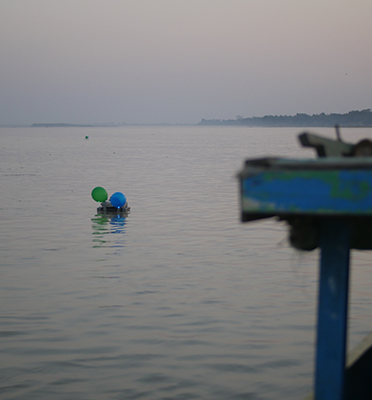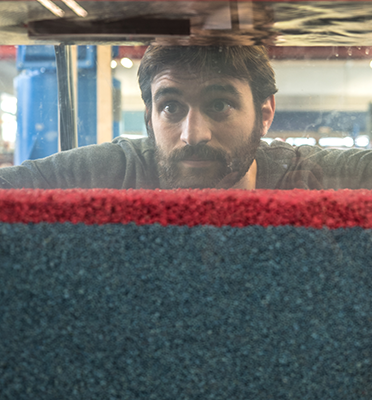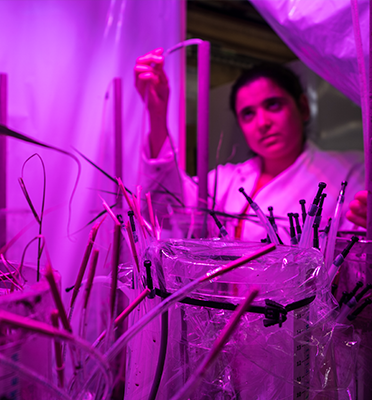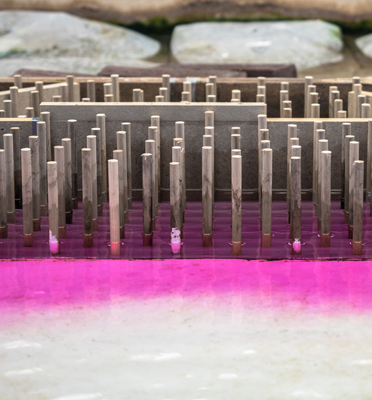A river flows through the main channel of the waterlab full of little, green plastic plants. PhD Andrés Vargas uses this set up to study how rivers behave. What determines their shape? If you know that, you can arrive at better decisions for the cities and land located along the river. For example, where is the best place to build a bridge? And what effect does that have on the river and the surrounding land?
Vegetation’s role
The two principal changes that determine the shape of a river are the bed level changes and the processes on the banks. When a river meanders, the banks erode on one side and extend on the other. There are currently multiple models that use the strength of the flow to calculate how the banks erode. “But problems arise when trying to calculate their extension as there are no models for this. It is often assumed that the land that erodes from one bank, expands the other. But it isn’t that simple due to, among other things, the role of vegetation in the process and that is what my research is on. I want to know which role vegetation plays in the development of riverbanks.”
The experiment
To discover how this works and then model it, Vargas started his experiment at the lab with a straight, narrow, elongated channel in the large flume. He created scenarios with and without vegetation. “During Phase 1 we subsequently allowed the water to flow for 90 hours: sandbanks developed as well as erosion on the other side. During Phase 2 we did the same again, but after a week we placed vegetation along the floodplains. During Phase 3 we repeated the entire process, this time not only putting vegetation on the flood plains, but also on the sediment bars.” During every phase Vargas threw small, black squares into the river that could be detected by a photo camera, allowing him to measure how the water flowed.
Lots of work, lots of fun
Vargas opted for small plastic plants to study the role of vegetation. “We put 10,000 in the main channel. That was really fun, but an awful lot of work. We did it in hour-long planting shifts. It was impossible to last any long as you were upside down and this led to cramping arms.” However, it was worth it. “We collected unique data! Elsewhere this has only been studied in miniature, with solely qualitative results. Now, for the first time, we have quantitative data.”




